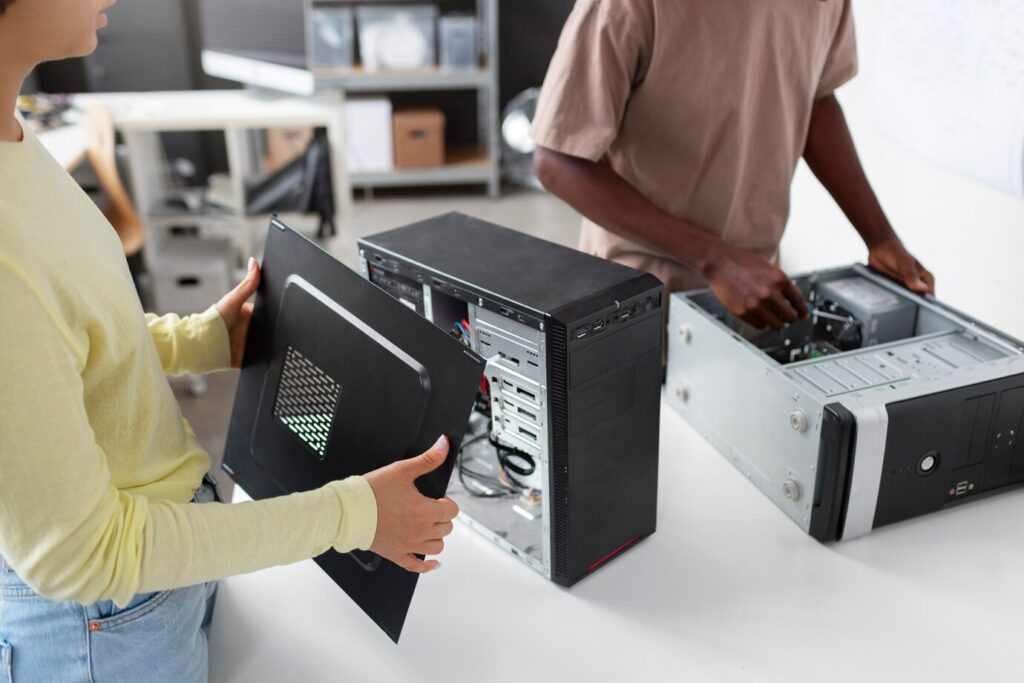Keeping up with the latest IT equipment can be expensive. Businesses and individuals alike often face the challenge of upgrading hardware while managing budgets. But what if you could recover some of those costs by reselling old equipment? With the right strategy, you can turn outdated tech into cash, making upgrades more affordable.
In this guide, we’ll explore how to effectively resell IT equipment to offset costs. We’ll cover everything from preparing devices for resale to choosing the best platforms for selling. By the end, you’ll have a clear plan to maximize returns on your old tech.
Why Reselling IT Equipment Makes Financial Sense
Technology evolves quickly, and businesses must stay competitive by upgrading their hardware. However, replacing computers, servers, and networking gear doesn’t mean the old equipment is worthless. Many organizations and individuals look for refurbished or used IT gear at lower prices.
By reselling, you can:
- Recover a portion of your initial investment
- Reduce e-waste by giving devices a second life
- Free up storage space by clearing out unused equipment
- Fund future upgrades without straining your budget
Even if devices are a few years old, they may still hold value—especially if they’re well-maintained. The key is knowing how to assess, prepare, and market your equipment effectively.
Step 1: Assess the Value of Your IT Equipment
Before listing anything for sale, determine what your equipment is worth. Not all devices depreciate at the same rate, so research is crucial.
Check Market Prices
Look at online marketplaces like eBay, Amazon Renewed, and specialized IT resellers to see what similar models are selling for. Pay attention to:
- The age and condition of comparable listings
- Whether the items are sold individually or in bulk
- If warranties or accessories are included
Consider Depreciation
IT equipment loses value over time, but some brands and models hold up better than others. Enterprise-grade hardware (like Cisco routers or Dell servers) often retains more value than consumer-grade products.
Evaluate Functionality
Test all devices to ensure they work properly. Buyers will pay more for fully functional equipment. If something is broken, decide whether repairs are cost-effective or if it’s better to sell for parts.
Step 2: Prepare Your Equipment for Resale
First impressions matter, even with used tech. Properly preparing your devices increases their resale value and speeds up the selling process.
Clean and Inspect
Dust, scratches, and worn-out components can lower the selling price. Clean devices thoroughly and fix minor cosmetic issues if possible.
Reset to Factory Settings
For computers, smartphones, and tablets, perform a factory reset to wipe all personal or company data. Use professional data erasure tools for hard drives and SSDs to ensure no sensitive information remains.
Gather Accessories and Documentation
Original chargers, cables, manuals, and licenses add value. If you no longer have them, consider bundling compatible third-party accessories.
Step 3: Choose the Right Selling Platform
Where you sell your IT equipment impacts how much you earn and how quickly it sells. Different platforms cater to different buyers, so pick the one that aligns with your goals.
Online Marketplaces (eBay, Amazon, Facebook Marketplace)
- Pros: Large audience, flexible pricing, ability to sell globally
- Cons: Fees, potential, longer selling process
Specialized IT Resellers (Gazelle, TechReset, ITAD Providers)
- Pros: Quick sales, bulk selling options, professional evaluations
- Cons: Lower offers than private sales, may require shipping
Trade-In Programs (Apple, Dell, Best Buy)
- Pros: Hassle-free, instant credit toward new purchases
- Cons: Lower payouts compared to direct sales
Local Businesses and Schools
Some small businesses, nonprofits, or schools look for affordable IT equipment. Selling locally avoids shipping costs and builds community relationships.
Step 4: Price Your Equipment Competitively
Pricing too high can deter buyers, while pricing too low leaves money on the table. Follow these tips to find the sweet spot:
- Compare similar listings – See what others are charging for the same make and model.
- Factor in condition – Discount prices for noticeable wear and tear.
- Be open to negotiation – Buyers often expect some haggling, so leave room for offers.
- Consider bulk discounts – Selling multiple items together can attract business buyers.
Step 5: Write an Effective Listing
A well-crafted listing increases buyer confidence and helps your equipment sell faster.
Include Key Details
- Brand, model, and specifications (CPU, RAM, storage, etc.)
- Condition (new, like-new, used, for parts)
- Any included accessories or warranties
- Reason for selling (upgraded, surplus, etc.)
Use High-Quality Photos
Clear images from multiple angles help buyers assess condition. Show any flaws honestly to avoid disputes later.
Highlight Unique Selling Points
If the device has rare features, extra storage, or professional software installed, mention it.
Step 6: Safely Complete the Sale
Once you find a buyer, ensure a smooth and secure transaction.
Secure Payment Methods
Use trusted platforms like PayPal (for buyer/seller protection) or cash for local sales. Avoid wire transfers or gift cards, which are common tactics.
Shipping and Packaging
If shipping, use proper padding and insurance to prevent damage. Provide tracking details promptly.
Local Meetup Safety
For in-person sales, meet in a public place during daylight hours. Some police stations offer safe exchange zones.
Alternative Options If Resale Isn’t Viable
Not all old IT equipment will sell. If that’s the case, consider:
Donating for Tax Deductions
Schools, nonprofits, and charities may accept working devices, potentially qualifying you for a tax write-off.
Recycling Responsibly
E-waste recycling programs ensure hazardous materials are disposed of safely. Some manufacturers offer free recycling for their products.
Repurposing Internally
Older devices can serve as backup systems, training tools, or secondary workstations.
Final Thoughts
Reselling used IT equipment is a smart way to recoup costs and reduce unnecessary spending. By assessing value, preparing devices properly, and choosing the right sales channels, you can turn outdated tech into a revenue stream.
The key is to act before equipment loses too much value. Regular upgrades and resales create a cycle that keeps your tech current without breaking the bank. Start evaluating your unused devices today—you might be surprised at how much they’re still worth!
Have you resold IT equipment before? Share your tips and experiences in the comments below!




